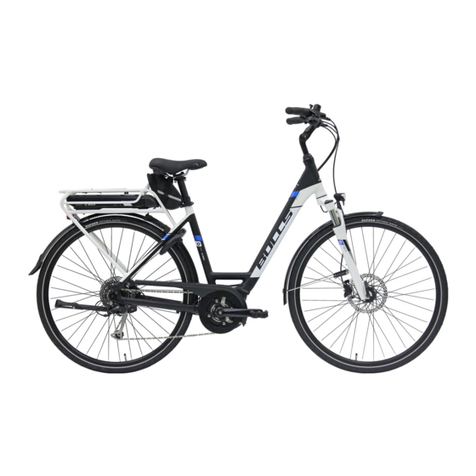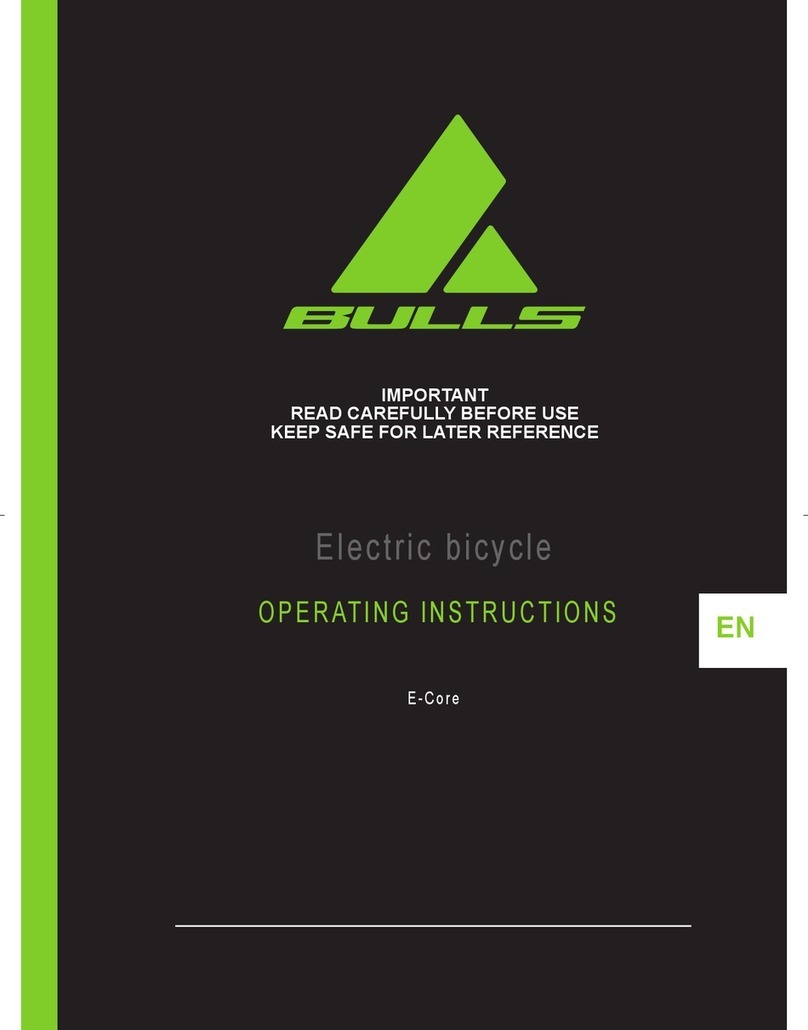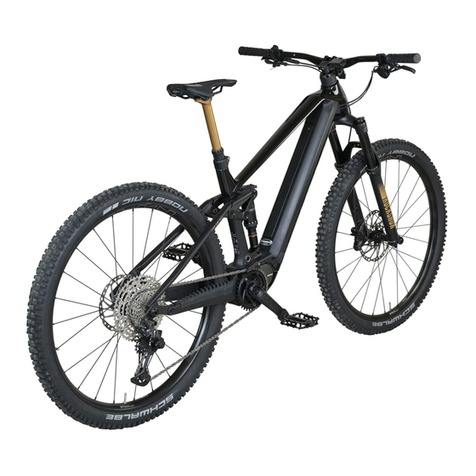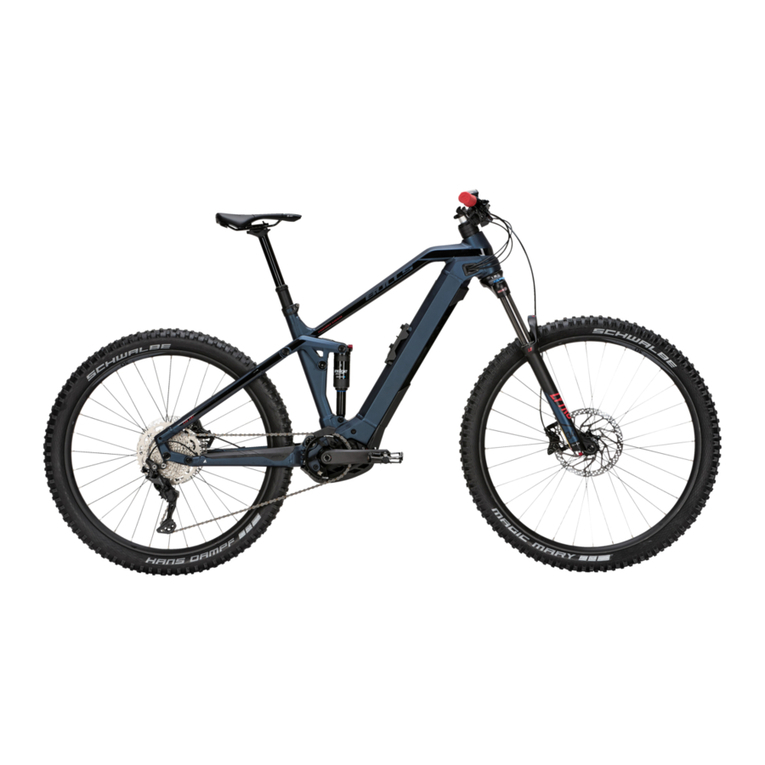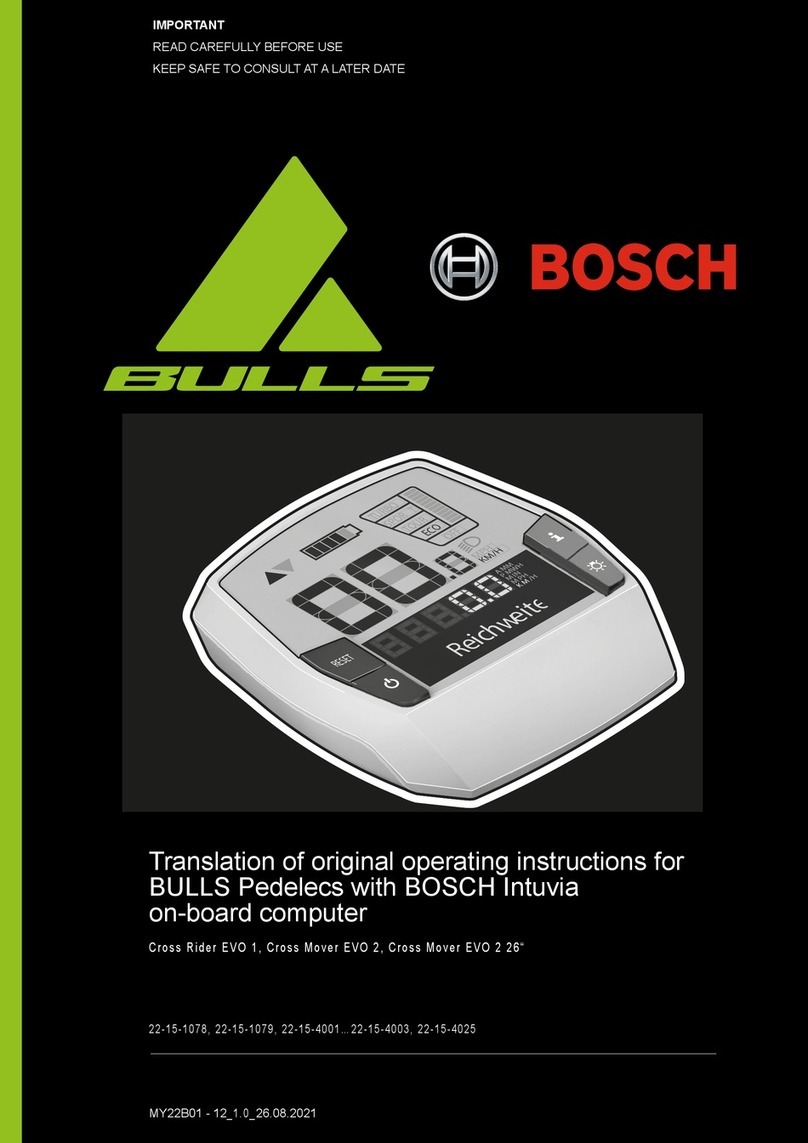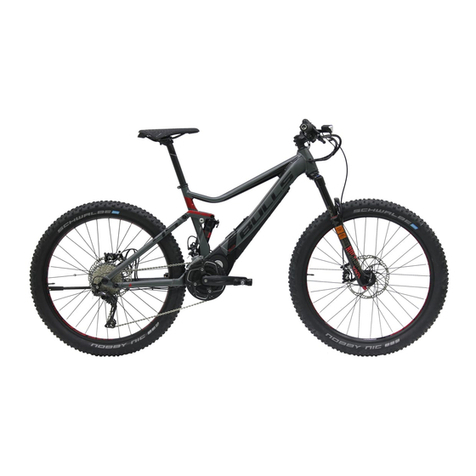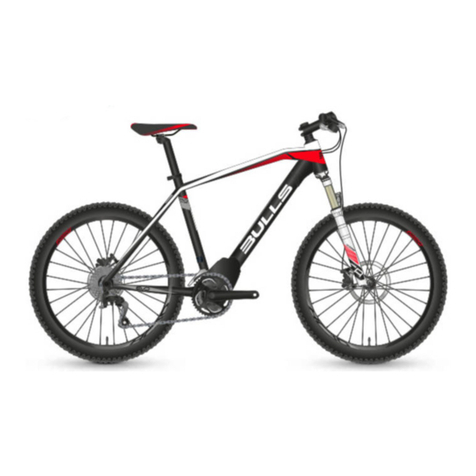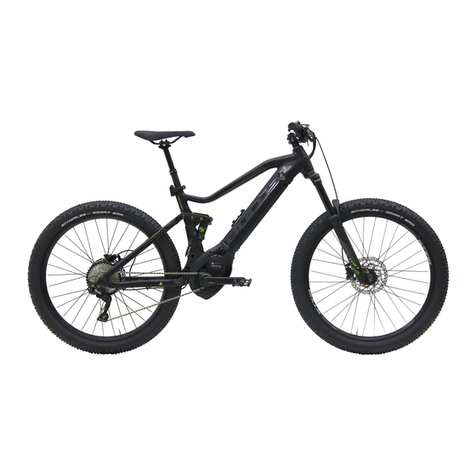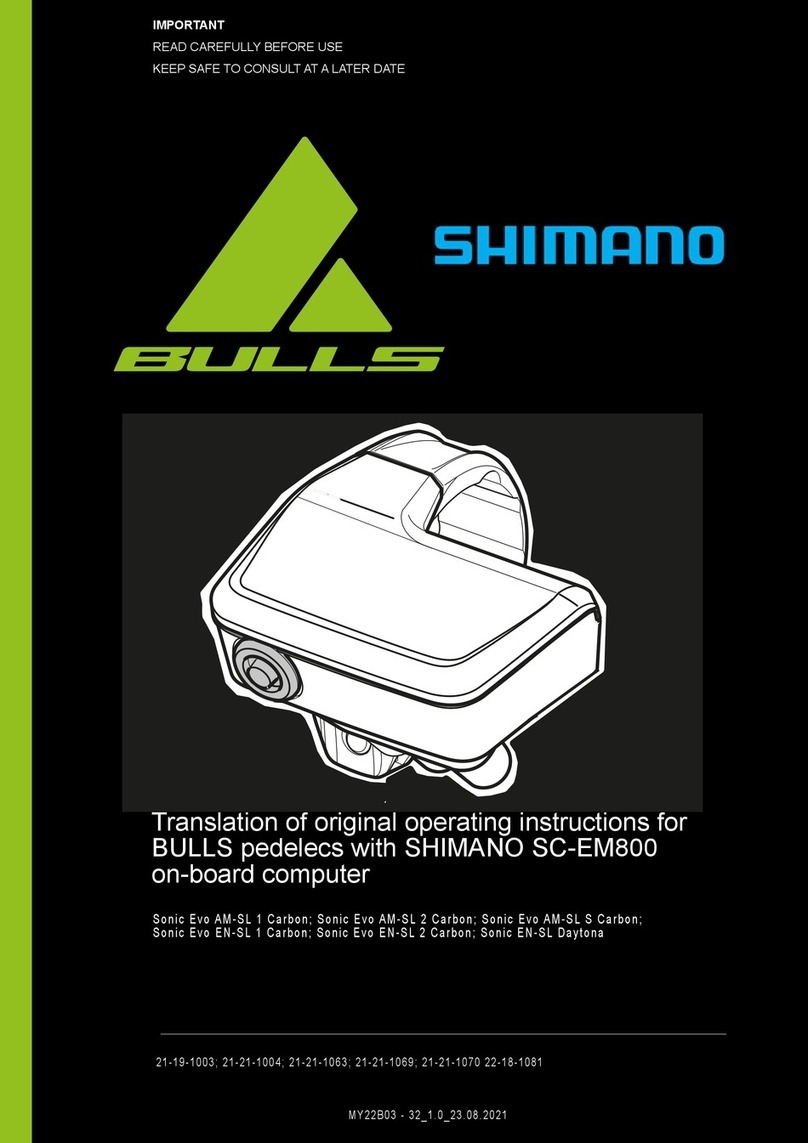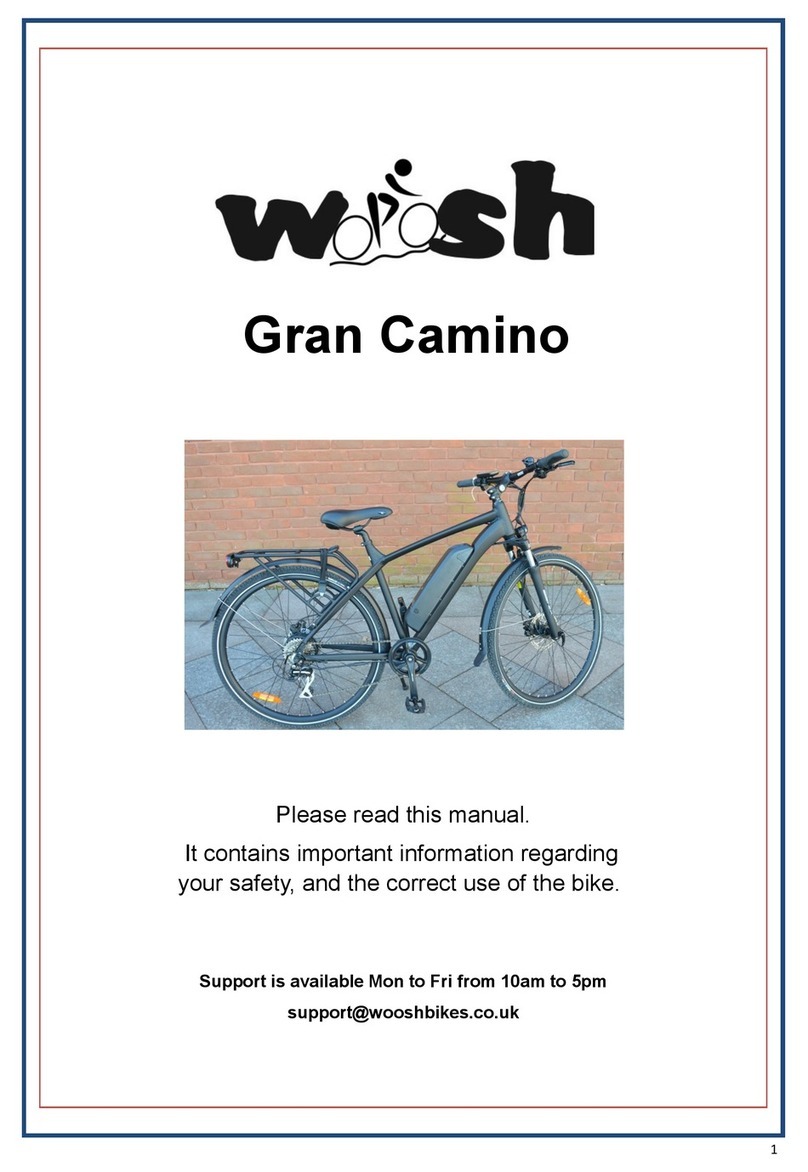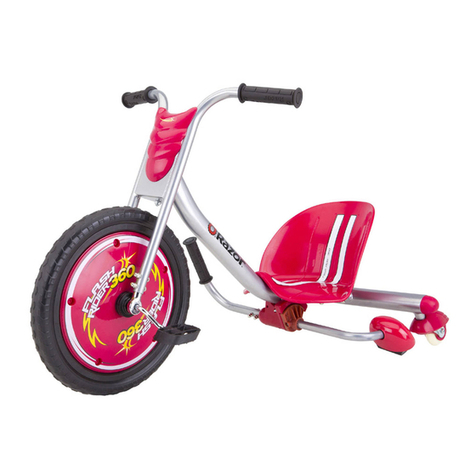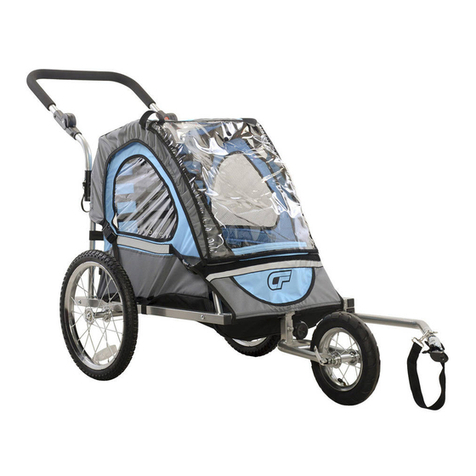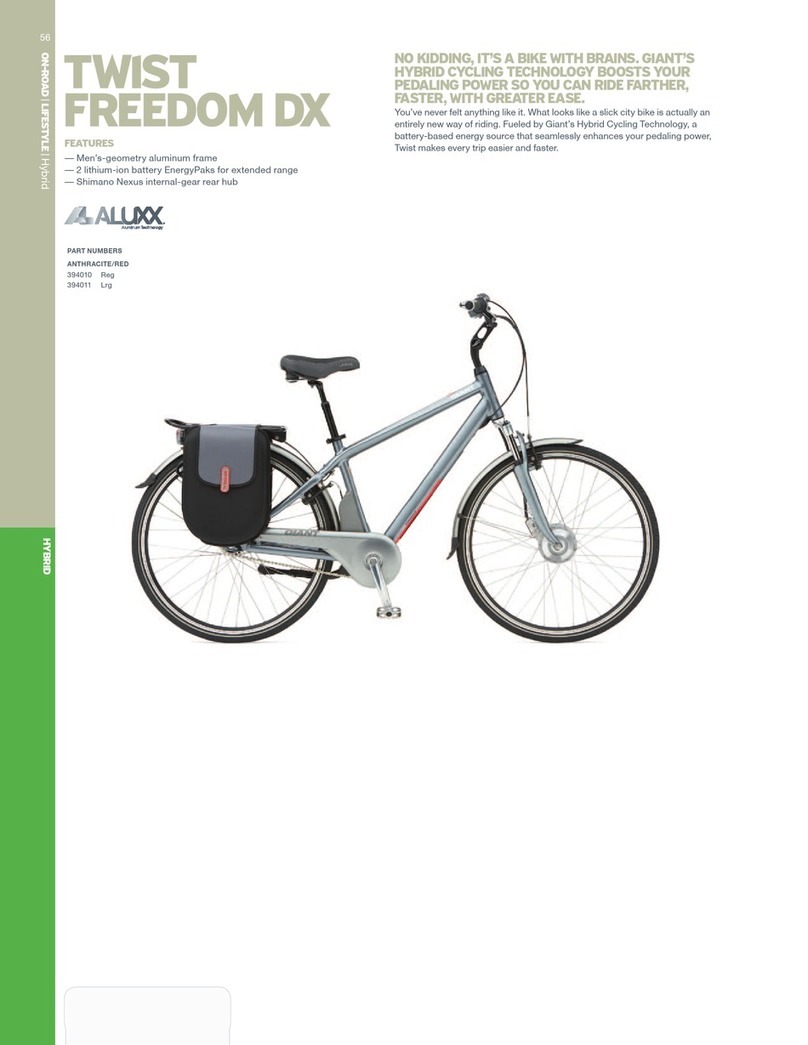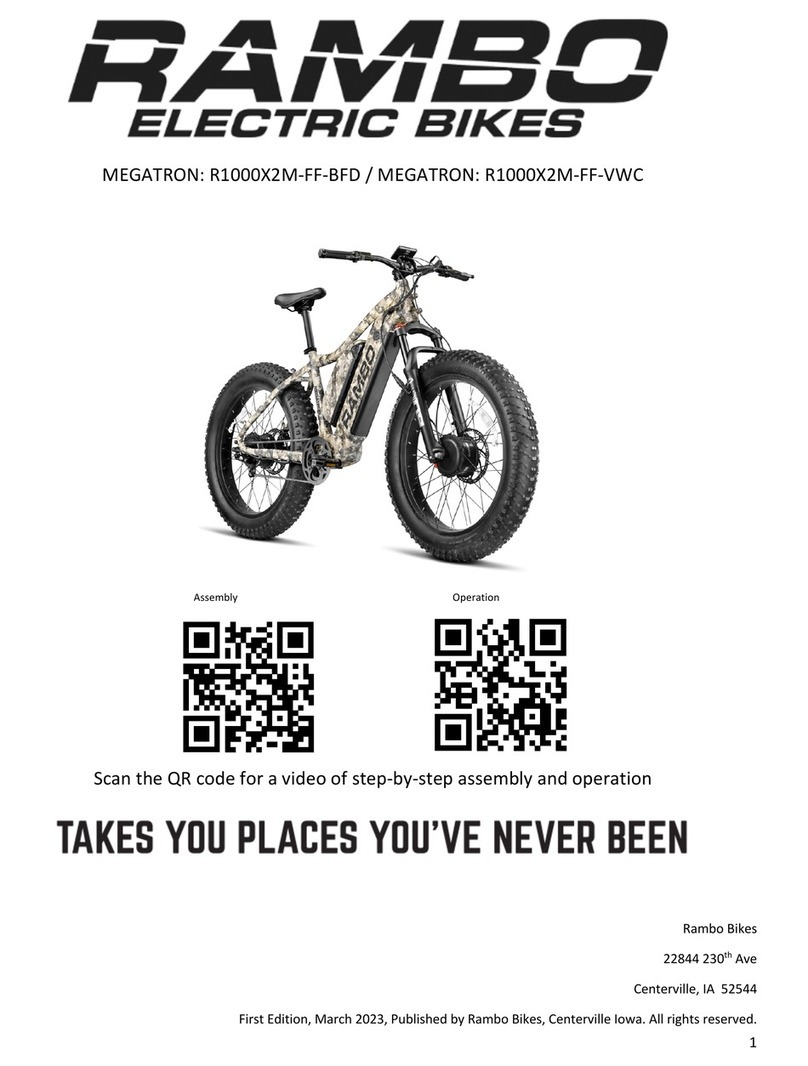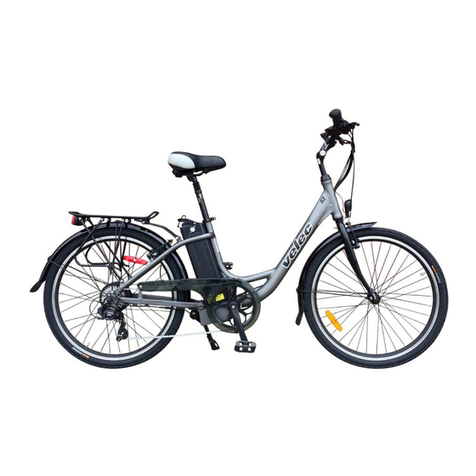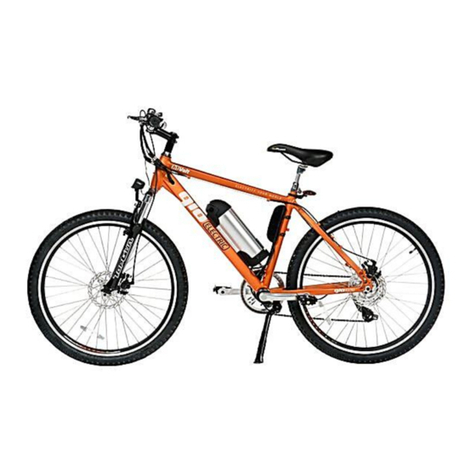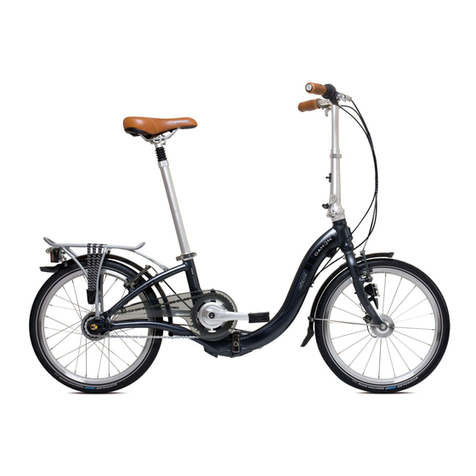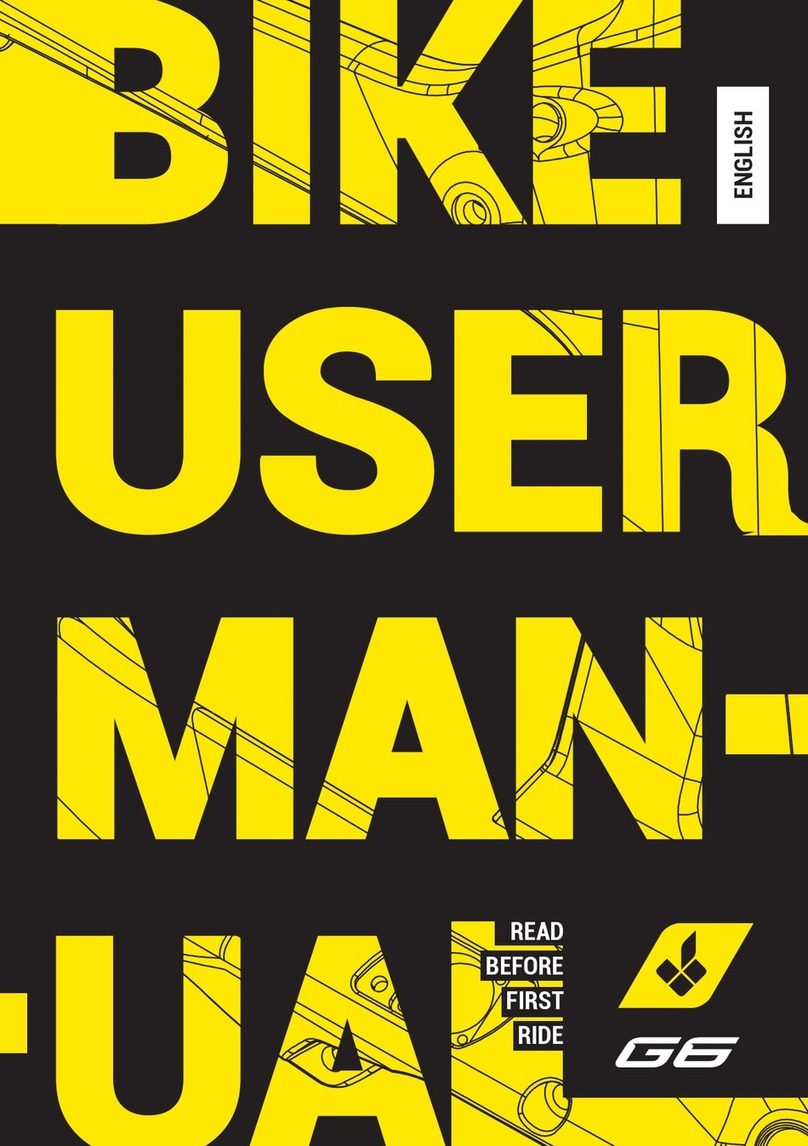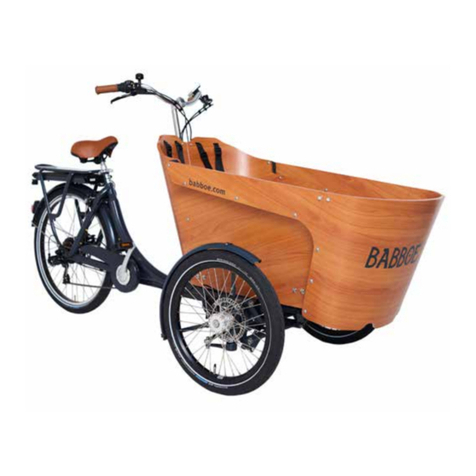
MY23B0a - 52_1.0_31.08.2022 8
Contents
7.5.1.6 Checking the rim hooks 204
7.5.1.7 Checking the spokes 204
7.5.2 Checking the brake system 205
7.5.2.1 Checking the handbrake 205
7.5.2.2 Checking the hydraulic brake system 205
7.5.2.3 Checking the Bowden cables 205
7.5.2.4 Checking the disc brake 206
7.5.3 Checking the chain 207
7.5.4 Checking the chain tension 207
7.5.4.1 Check tension in derailleur gears 207
7.5.4.2 Check tension in hub gear 207
7.5.5 Checking the belt for wear 207
7.5.5.1 Rough check 207
7.5.5.2 Check 208
7.5.6 Checking the belt 209
7.5.7 Checking the belt for wear 209
7.5.8 Checking the belt sprockets for wear 209
7.5.9 Check belt tension 209
7.5.9.1 Gates Carbon Drive mobile app 210
7.5.9.2 Gates Krikit tension meter 210
7.5.9.3 ECO tension tester 211
7.5.10 Checking the riding light 212
7.5.11 Checking the stem 213
7.5.12 Checking the handlebars 213
7.5.13 Checking the saddle 213
7.5.14 Checking the seat post 213
7.5.14.1 Checking the derailleur gears 213
7.5.14.2 Checking the hub gear 214
7.5.15 Check gear shift 214
7.5.15.1 Checking the electric gear shift 214
7.5.15.2 Check the mechanical gear shift 214
7.5.15.3 Checking the derailleur gears 215
7.5.16 Adjusting gear shift 215
7.5.16.1 Adjusting the ROHLOFF hub 215
7.5.17 Adjusting cable-operated gear shift, dual-cable 215
7.5.18 Adjusting Bowden-cable-operated twist grip, dual-cable 216
7.5.19 Checking kickstand stability 216
8 Inspection and maintenance
8.1 Initial inspection 217
8.2 Major inspection 217
8.3 Component-specific maintenance 217
8.4 Carry out initial inspection 220
8.5 Perform major inspection 221
8.5.1 Inspect frame 228
8.5.1.1 Inspecting the carbon frame 228
8.5.2 Inspecting the pannier rack 228
8.5.3 Inspecting and maintaining the rear frame damper 228
8.5.4 Inspecting the gear hub 229
8.5.4.1 Adjusting the hub with cone bearing 229
8.5.5 Inspecting the stem 229
8.5.6 Inspect and grease steering headset 229
8.5.7 Inspecting the axle with quick release 230
8.5.8 Inspecting the fork 231
8.5.8.1 Inspecting the carbon suspension fork 231
8.5.8.2 Inspecting the suspension fork 231
8.5.9 Inspecting the seat post 232
8.5.9.1 Inspecting the carbon seat post 232
8.5.9.2 Inspecting and greasing BY.SCHULZ suspension seat post 232
8.5.9.3 Inspecting and greasing RS SUNTOUR suspension seat post 233
